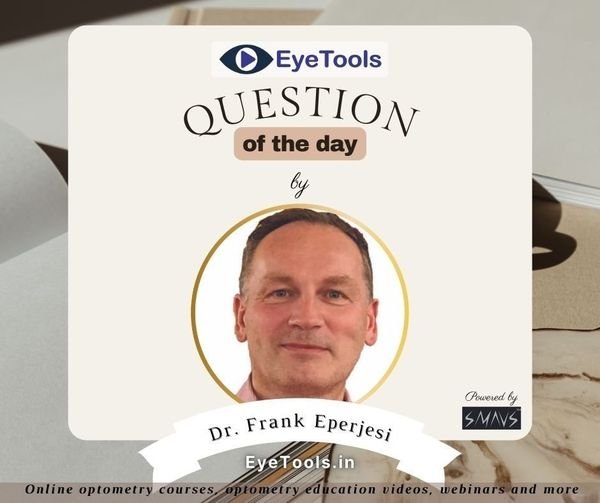
Welcome to Question of the Day #373
EyeTools Question of the Day #373
I opened my first community eye care practice a year ago. Things are going well but I want to make sure that I and the staff are working as efficiently as we can. I want to avoid any un-necessary steps in all aspects of the practice, such as appointment booking, patient arrival, examination, dispensing, ordering and collection. Do you have any tips?
There are lots of big steps in examining a person in community practice and within each of those big steps there are many smaller ones. I suggest you conduct a step survey, then a step analysis and then a step improvement or removal. No matter how small a step, if it is part of your overall process it needs to be looked at.
It is very important to talk to all the staff members about your steps review. You won’t know all the steps yourself and you want know which steps are slowing your staff down. Talk to the people who are involved with the steps.
When I worked for a teaching organisation and had control of the finances, I was asked by a person in the reception team if we could lease a better photocopier that would automatically copy to both sides of the paper, saving paper costs and time. I agreed and staff were happier and we were more cost effective. I would never have known that this was a problem.
So, here is a simple step survey:
Patient phones for an appointment.
Phoned answered by a member of staff who is free
Patient details received.
Time and date for appointment given.
Acceptance of time and date noted in diary.
And a step analysis:
Do we miss calls and potential appointments because staff are busy doing other things?
Do we need a person whose primary role is to take phone calls and greet people coming in to the practice? They can do other work when not working on their primary role.
Do we need a diary system that can automatically recognise a person’s address from their postcode, saving time and asking questions?
Can we minimise the number of questions we ask the patient before offering an appointment time and date?
Would a computer-based diary be better than a paper-based diary?
Instead of phoning a person on the day of their appointment to remind them can we use an automated system that sends a text message.
There is no need to get information which is not useful. There is no need to ask for the same information twice.
And a second step survey and analysis:
Patient arrives for appointment.
What information do we need to verify which person has arrived? Is family name enough?
Do they need to sign anything now?
Do they need to sign something at the end of the examination?
Would it be best to sign everything at the end?
Do we have a manual or an automated focimeter for checking their current glasses? If manual should we invest in an automated one? Do we need two focimeters if we have two clinics at the same time.
Do patients need to wait to see the eye care practitioner? If yes, can this be avoided or reduced? What can the person do while waiting?
And a clinical step survey and analysis:
Do we need to measure the vision of a person who needs to wear glasses full time?
Do we need to use a ‘puff of air’ tonometer where we need to move the patient? Can we use a hand-held device such as the Icare tonometer and keep the person in the same chair?
Do we need to conduct cover test for a person with a large difference in best corrected visual acuity?
Do we need to examine the central retina during ophthalmoscopy when we have good quality photographs of the central retina?
Do we need to ask the patient when they last had their blood pressure measured?Do we need to refer patients with cataract when their quality of life is not affected?
There is no need to conduct tests that do not provide information which is useful to patient management.
There are many others steps for analysis, such as moving the patient from the examination to dispensing, the dispensing process, ordering, checking and collection.
It’s a big job but if you can eliminate or improve steps you can see more patients, leading to improved finances or give your staff more rest time (including you), leading to improved well-being and perhaps less absence.
Removing or improving steps for each patient when multiplied up by the number of patients you see in a week/month/year can give huge gains in efficiency.
Why have steps that do not give you, your staff or your patients any benefit?
Why have steps that slow you down?
This is worth spending time on.



1.jpg)



.jpg)
.jpg)



_(Instagram_Post).jpg)
.jpg)
_(1080_x_1080_px).jpg)


with_UP_Cabinet_Minister_Sh_Nand_Gopal_Gupta_at_OpticsFair_demonstrating_Refraction.jpg)
with_UP_Cabinet_Minister_Sh_Nand_Gopal_Gupta_at_OpticsFair_demonstrating_Refraction_(1).jpg)

.jpg)








.jpg)



.png)




